Reviews
Sam Fuller
USA, 1952
Credits
Review by Cullen Gallagher
Posted on 28 November 2012
Source TV Broadcast
Categories Samuel Fuller: Deep Cuts
One could say that all of Samuel Fuller’s films are war pictures. There are the obvious ones that are, literally, about historical wars: the Civil War and the Indian Wars (Run of the Arrow), World War II (The Big Red One, Merrill’s Marauders, Verboten!), the Cold War (Pickup on South Street, Hell and High Water), Korea (The Steel Helmet, Fixed Bayonets), Indo-China (China Gate), the People’s Revolution in the Philippines (The Madonna and the Dragon). And there are the not-so-obvious ones, movies that turn everyday cultural landscapes - from city streets to desert sands, hospital corridors to Japanese rooftop amusement parks - into metaphoric battlefields on which social issues and political principles are virulently fought over by diverging factions. Greed, racism, bigotry, prejudice, exploitation, oppression: these are forces that Fuller combats so vehemently in his movies. Is Vincent Price’s document-forging, law-twisting land monger in The Baron of Arizona not similar to politicians who start wars over such abstract concepts as land boundaries and ownership, and who manipulate legislature for their own gain? And are not the hospital hallways of Shock Corridor veritable trenches where extreme cases of America’s social ills face off in hand-to-hand combat? Independence, liberty, and integrity—these are the three foremost values at the heart of all of Fuller’s films, and also at the heart of the man himself and his battles behind the scenes. A consummate independent filmmaker, Fuller fought for social freedom on-screen and for artistic freedom off. No film of his embodies these ideals and realities more perfectly than Park Row.
Set in 1886, Park Row is named after the illustrious street that was, for a long time, the home to New York City’s newspaper empire. The story is about a reporter, Phineas Mitchell, who loses his job at The Star when he stands up to his boss, the unscrupulous publisher Charity Hackett. A drinking companion who admires Mitchell’s integrity offers to put up the funding and equipment for Mitchell to publish his own paper, one that embodies his high ideals. The underdog of Park Row, Mitchell’s paper - The Globe - quickly wins the favor of readers, the admiration of fellow journalists, and the ire of his competitors, particularly Hackett. When Mitchell refuses to merge with her, Hackett begins an all-out war against The Globe. Hell-bent on destroying the paper itself and breaking Mitchell’s ethical and moral spirit, Hackett and her crew stop at nothing in their quest to control Park Row.
Park Row holds a unique position in Samuel Fuller’s body of work. A personal project, its roots go back to Fuller’s own coming-of-age on that famous New York City street. Fuller was only twelve when his father passed away. His mother relocated the family to New York, and Fuller took to the streets in search of a new home and a new father. He quickly found both in Park Row. As he recounts in his memoir, A Third Face, Fuller was directed to Park Row because he needed work, and hawking papers seemed a good idea at the time.
I made it down to Park Row, the heart of the newspaper business in Manhattan, not far from the Brooklyn Bridge. I’d never seen so many newspapers piled up in one place at one time. Kids were everywhere, getting their allotments of evening newspapers to take out into the streets to sell. I felt right at home.
This wide-eyed enthusiasm is still ever present in his film, Park Row. While the movie isn’t autobiographical in the strictest sense, Fuller did work his way up to becoming a reporter for the New York Evening Graphic, covering all the sights, sounds, murders, and scandals of the Big Apple during the height of the Jazz Age. Autobiography it isn’t, but there’s an intimacy with the street, and deep investment in the profession, and a passion for the printed page that emanates from every frame of Park Row.
So personal a project was the film that Fuller walked away from Fox and head of production Darryl Zanuck, with whom Fuller had enjoyed a positive working relationship on his previous film, Fixed Bayonets!. Zanuck, according to Fuller, loved the idea of Park Row—but saw it as a Technicolor musical. Fuller, like Phineas Mitchell, wouldn’t concede. “It’s a little black-and-white picture,” he told Zanuck, “a period piece. It has to look real. It has to be intimate and powerful.” Fuller remembered in A Third Face:
For the first time, I craved complete artistic control over a movie to get my own vision up on the big screen. I wouldn’t compromise on this project because it was just too important to me. Goddamnit, Park Row was me!
After working with an independent producer for his first three movies, and a major Hollywood studio for his fourth, Fuller took a bold step by writing, producing, directing, and financing Park Row himself. Rather than caving under pressure, Fuller produced what I would argue is the most fully realized film of his career. Every camera movement, every set piece, every actor, every line of dialog—Park Row is more than just only flawlessly crafted, but it exudes a youthful zest and optimism that one doesn’t find elsewhere in Fuller’s filmography.
From I Shot Jesse James all the way to his final film, The Madonna and the Dragon, there’s a cynical edge and world-weary knowledge to Fuller’s work: he hopes for the best while seeing the worst in society. Charity Hackett and her associates at The Star are among the most ruthless and unsympathetic in Fuller’s entire body of work, yet the moral strength of Mitchell and his crew, and their faith in each other and in the journalistic profession, imbue Park Row with a warm-hearted optimism. Locating strength in community, work, and integrity, Fuller reveals himself to be the inheritor of the moral codes of John Ford and Howard Hawks, two stylistically and politically distinct filmmakers who shared a common belief in “the group” as the building block of American society. If Ford believed in tradition, and Hawks in collaboration, then Fuller is a believer in the squad. Be it a team of soldiers during wartime or reporters in the newsroom, Fuller’s squads are microcosms for society at large, and the interpersonal relations reflect the worst of the world as he sees it, but also the best of the world as he would like to see it. Park Row features one of the most supportive, congenial, and familial squads in Fuller’s filmography. A little boy with “ink in his blood” just getting his start in the biz, a world-weary aged reporter getting a second shot at life, an illiterate immigrant who can set type faster than anyone else, an inventor working on a type-setting machine called the Linotype that will revolutionize the industry, and a driven, ethically-committed editor—these are some of the soldiers in Fuller’s Park Row squad. Young and old, tradition and innovation, sweat and blood. They’re all in it together.
Formally audacious, Park Row exhibits the range and experimentation of Fuller’s stylistic palette. Even before the opening titles, Fuller begins with a series of title cards (in all caps!) whose direct address technique recalls silent film-era Soviet formalists such as Sergei Eisenstein.
THESE ARE THE NAMES OF 1,772 DAILY NEWSPAPERS IN THE UNITED STATES
ONE OF THEM IS THE PAPER YOU READ
ALL OF THEM ARE THE STARS OF THIS STORY
DEDICATED TO AMERICAN JOURNALISM
From here, Fuller dives right into an opening shot that anticipates Orson Welles’ intentions for the opening of Touch of Evil. As the credits roll, Fuller films Phineas Mitchell strolling down Park Row. It’s a lengthy crane shot, interrupted by only a couple brief, intermittent cuts. The bravura of the camera movement shows off not only the expanse of the set created specifically for the film, but also introduces a bardic lyricism that will characterize Fuller’s direction throughout Park Row. If Park Row is like an epic ballad, then Fuller is the balladeer, a cinematic Homer, turning history into song, prose into poetry. Long takes and fluid camera movement are particularly noticeable during the bar scenes in which the camera weaves in and out like an anxious patron, eager to follow the narrative thread as it passes from voice to voice. Compositions such as these, again, emphasize the group, and Fuller’s refusal to cut reinforces the steadfast bond between in the squad.
Formally, the most impressive sequence in the film is the riot on Park Row when the conflict between The Star and The Globe turns physical. Beginning in Mitchell’s office, the camera (strapped to the operator himself) follows the publisher into the street as he punches Star thugs and dodges retaliation, moving in and out of offices on the street as he calls his men to arms. The sequence ends several shots later with Mitchell bashing the head of a Star thug into a statue of Benjamin Franklin, perhaps the most famous of all Park Row journalists. It’s a violent and none too subtle symbol for the war that Mitchell is fighting, but there’s a power and persuasion to the shot that can’t be denied. Moments like these punctuate Fuller’s films and explode with his personality. Like the newspapers he hawked on New York City’s docks, he spoke with two-inch headlines, but more importantly he spoke truthfully, with conviction, and with purpose. Fuller was extreme, but never without reason.
Gene Evans, the gruff star of Fuller’s third film, The Steel Helmet, reappears here as Phineas Mitchell. He’s the perfect on-screen complement to Fuller because he is able to locate grace in roughness, because his voice is a natural blend of hardboiled and lyrical, and because his steps are lined with determination. His movement is instinctual, like a champion boxer circling the ring or lion sauntering through his jungle kingdom. These are the qualities that make him believable as a great editor, and they are the same qualities that made him a convincing sergeant in The Steel Helmet, the sort of soldier that one entrusts with their life.
If Phineas Mitchell is the cinematic stand-in for Samuel Fuller, then it is of crucial importance that the most important speech belongs not to Mitchell but to his mentor. This allows Fuller to pay tribute to his own mentors on Park Row, and articulate the important personal mission that he inherited from them. In Park Row, Mitchell finds a front-page column left for him by his star reporter. He reads the column out loud:
Josiah Davenport, seventy-five, journalist, died today at peace with Park Row. His search for a man to carry on the fight of Horace Greeley was successful. His last words were written to this man:
“Phineas Mitchell, The Globe:
“In most countries, there is no freedom of the press. In the United States, there is. This freedom was born in 1734 in the libel trial of John Peter Zenger, printer and publisher of the New York Weekly Journal. He was acquitted by jury.
“When anyone threatens your freedom to print the truth, think of Zenger, Franklin, Bennett and Greeley. Think of them. Fight for what they fought for and died for. Don’t let anyone ever tell you what to print. Don’t take advantage of your free press. Use it judiciously for your profession and your country. The press is good or evil, according to the character of those who direct it. And The Globe is a good newspaper.”
In this speech we find the heart and soul, the hope and fear, and the mission and burden, of Park Row and of Fuller’s art at large. Park Row may be a celebration of American journalism, but it is also a celebration of battles fought and won in the past that still must be fought and won in the present, as well as in the future. Through not only the verbal homages to journalism’s grand heroes, but also the juxtaposition of the young boy just beginning his career to the old reporter ending his, Fuller emphasizes the generational aspect of Park Row’s narrative, and the perpetual, never-ending struggle for truth and liberty. Fuller is an American patriot—but his is a harsh form of admiration. His perspective on America is like that of Frank Capra—they manage to be both social critics and optimists at the same time. Capra, for all of his lighthearted flights of fancy, was capable of disturbingly dark moments. And Fuller, for all of his bitter truths about the prevalence of racism and exploitation in society, was still a hopeful American dreamer.
More Samuel Fuller: Deep Cuts
-
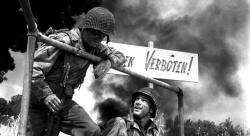
Verboten!
1959 -
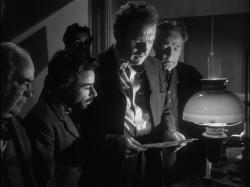
Park Row
1952 -
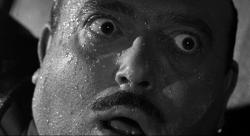
Underworld U.S.A.
1961 -
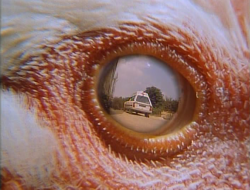
The Day of Reckoning
1990 -
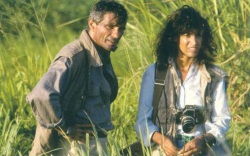
The Madonna and the Dragon
1990
We don’t do comments anymore, but you may contact us here or find us on Twitter or Facebook.



